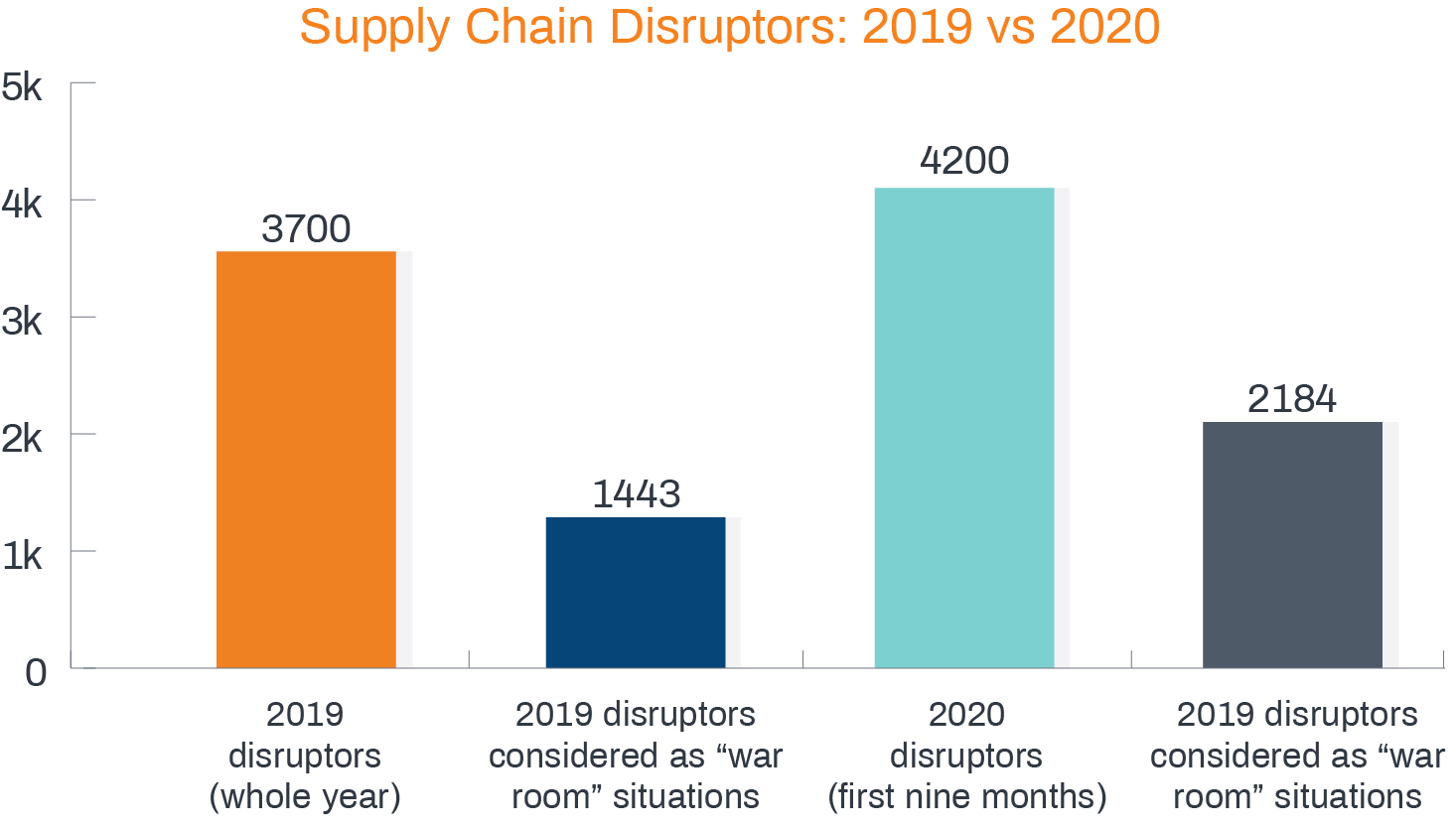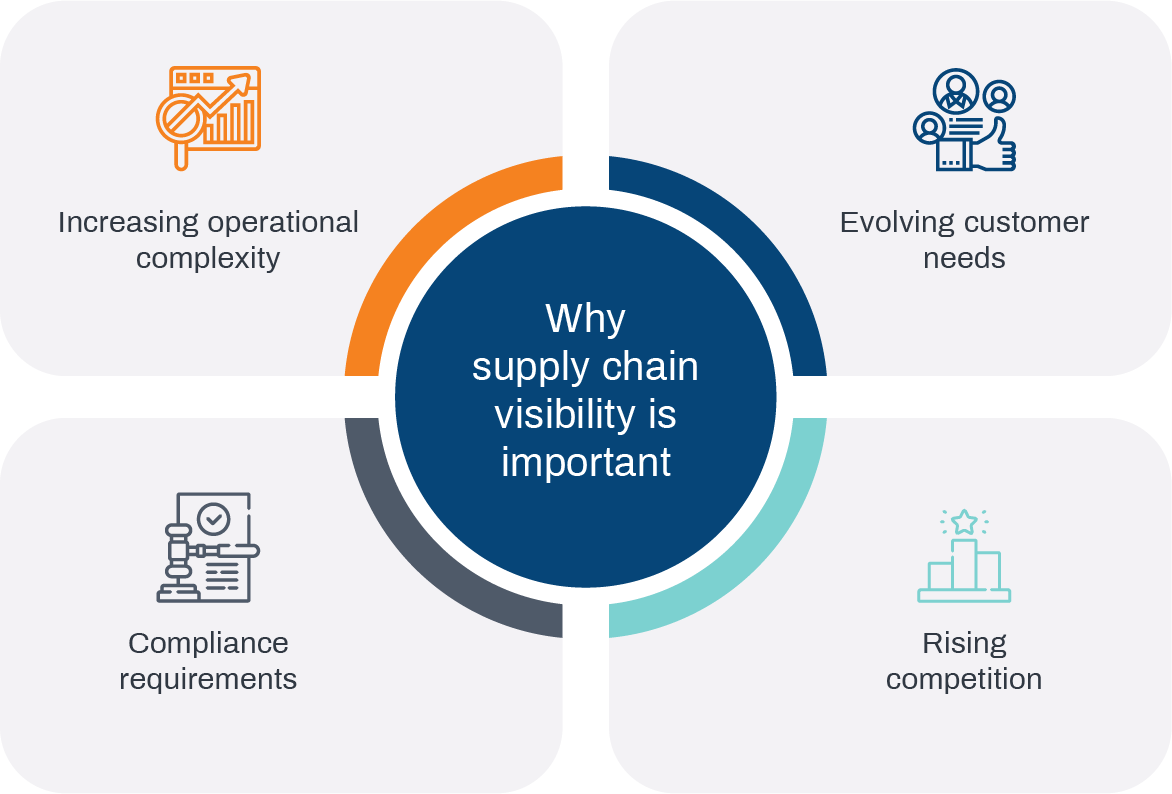The supply chain is the backbone of any business, regardless of its nature and size. Given its criticality, organizations that do not have end-to-end visibility into their operations can find themselves at a disadvantage. Very few businesses have complete supply chain visibility, thanks to their timely deployment of an intelligent supply chain management ERP software.
The COVID-19 crisis has added to the woes of companies that lack this kind of supply chain management ERP software by exposing critical vulnerabilities in the chain of supply, forcing them to build agile and resilient supply chain processes. In fact, according to a study conducted by the Institute for Supply Management, a significant number of businesses faced 'war room' like supply chain disruptions in 2020 because of inadequate supply chain visibility.

Why should you worry about supply chain visibility?
Giving concerned stakeholders access to valuable real-time, or near real-time, information can go a long way in building an agile supply chain. Visibility into the supply chain can make this agility happen; in fact, end-to-end visibility is important also because of these reasons:
- Managing the increasing complexity of supply chain operations: Modern businesses are globalized – a phenomenon that has spawned several different kinds of supply chains with various intricacies. The more diverse your supplier network, the more difficult it is to ensure transparency across the supply chain. The integrity of logistics and fruitful customer relations may get compromised, ultimately impacting profitability.
- Fulfilling ever-evolving customer demands: Delivering the right product at the right place at the right time, and as Covid-19 illustrated, in the right package size is the ultimate mantra to acquire, retain and satisfy customers. Today, consumers are used to quick deliveries, and this includes constantly tracking their orders – right from the loading docks to their locations. Anything short of this, and discontent starts brewing.
- Meeting compliance requirements: If your supply chain extends across international boundaries, it is likely you will face stringent regulations such as government tariffs, procurement rules, and changing trade agreements. A comprehensive view into your supply chain can help you monitor and manage multiple variables like weather, money exchange rate, political/ social unrest, or delayed shipments.
- Rising competition: Supply chain costs make up a considerable percentage of a company's operating budgets. Any inefficiencies in the supply chain directly affect bottom-line finances. Enhanced supply chain visibility ensures you are able to manage these issues and reduce costs.

Listed below are the key benefits of ERP in supply chain management and visibility:
- Real-time visibility:
Most organizations struggle to get real-time, or near real-time, updates about their logistics and inventory, making it difficult to make crucial informed decisions. However, building resilient and flexible supply chain processes needs timely, cross-channel inventory visibility.
The right ERP solution provides companies with timely updates, making it easier to identify bottlenecks and fix them quickly. For companies with global operations especially, such a solution helps monitor global inventory levels at their distribution centers. - Effective warehouse management:
Getting a holistic overview of warehouse operations— especially when they are spread across different geographic locations— is an uphill task without the right technology. A supply chain management-specific ERP solution will help you improve supply chain transparency by mitigating overstocking and stock-out situations. - Actionable insights:
The advanced tools in modern ERP systems analyze your inventory and supply chain data to derive valuable insights which can be used to forecast customer demand for various products. Having this data can help you identify roadblocks and take preventive measures to fix them. Suffice to say that you will be able to plan better.
Apart from the above-mentioned aspects of how ERP helps in supply chain visibility, there are numerous other direct and indirect ways in which the correct ERP solution can help you streamline your supply chain management. Finding the best ERP for supply chain management for your organization's unique requirements is the first step to achieve optimal supply chain visibility. Microsoft Dynamics 365 Supply Chain Management is an intelligent ERP system designed to help you with end-to-end supply chain processes.

